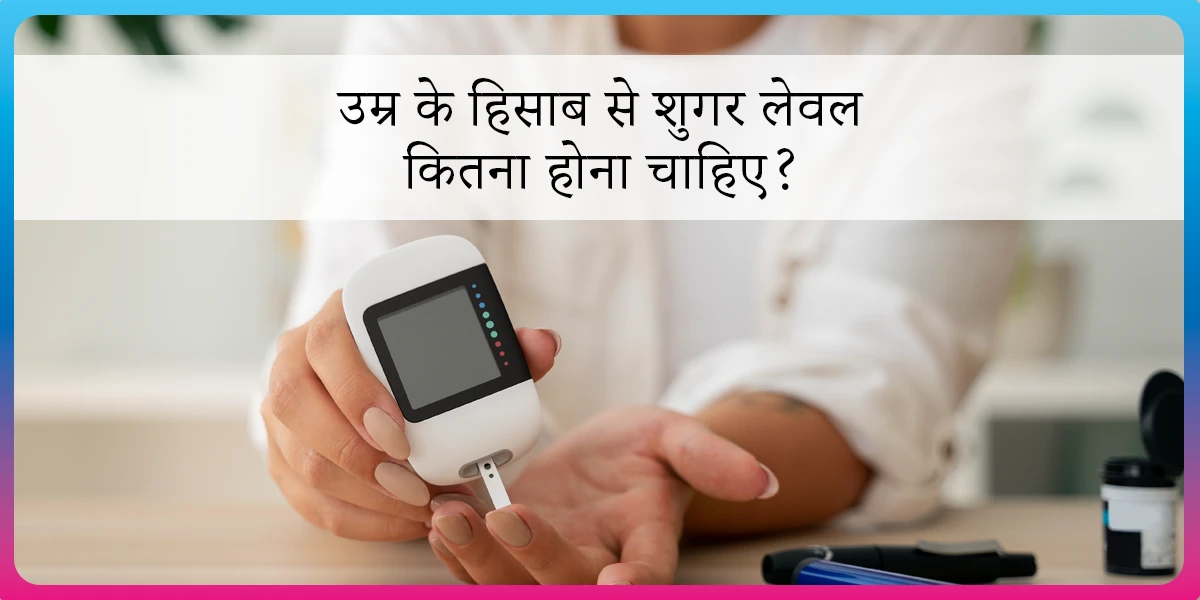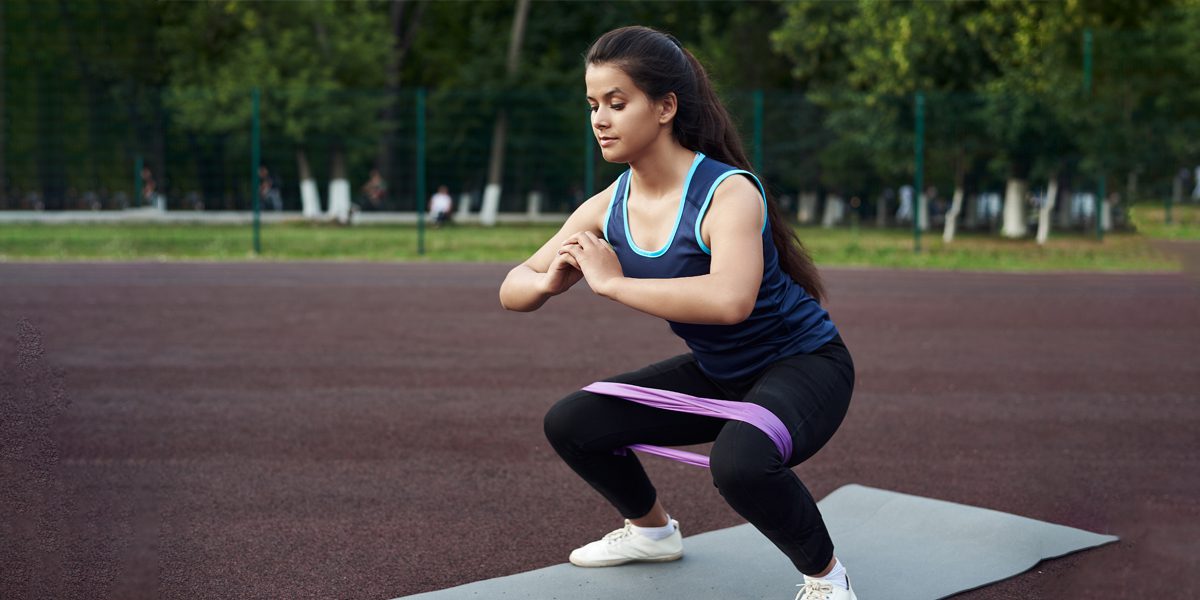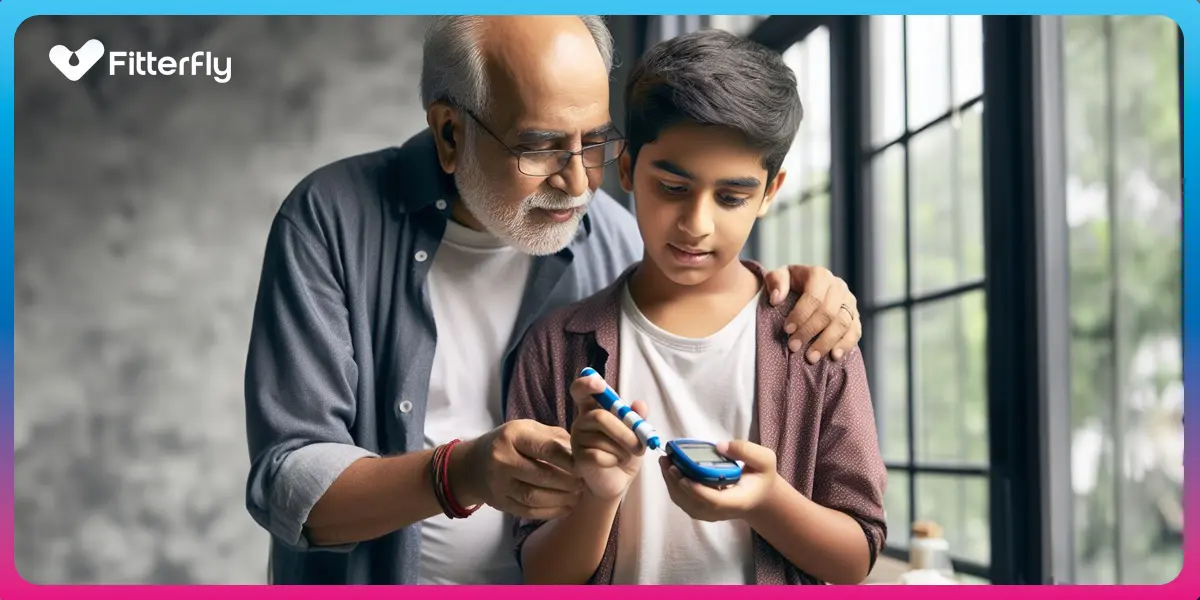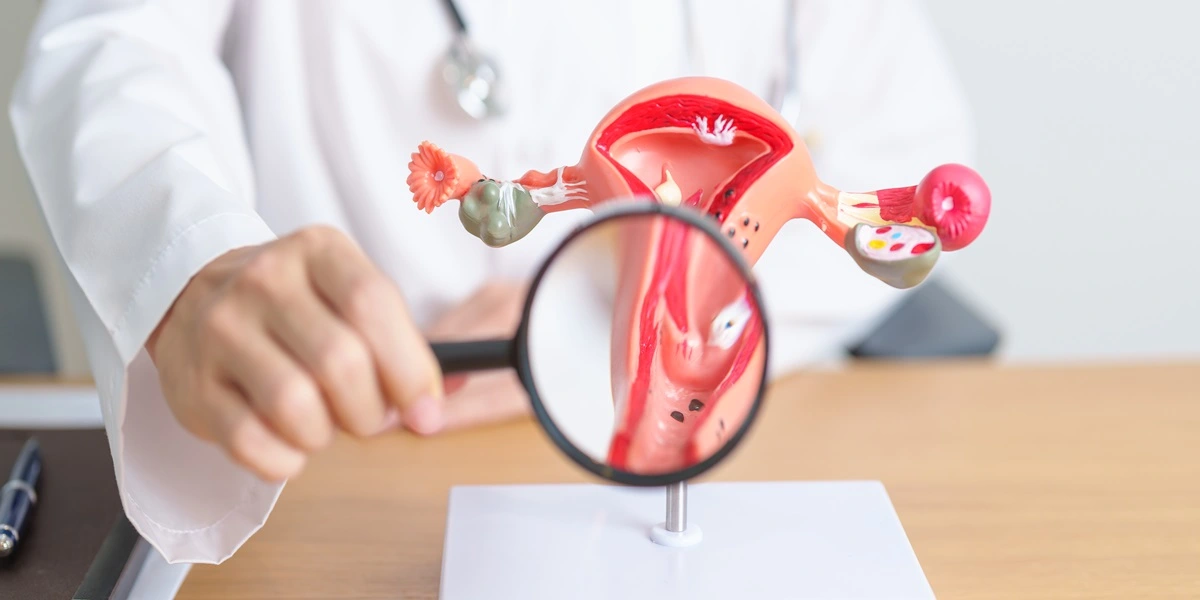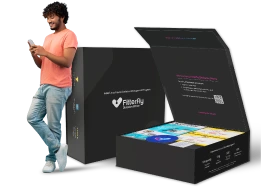Carbohydrates and Diabetes: What You Need to Know
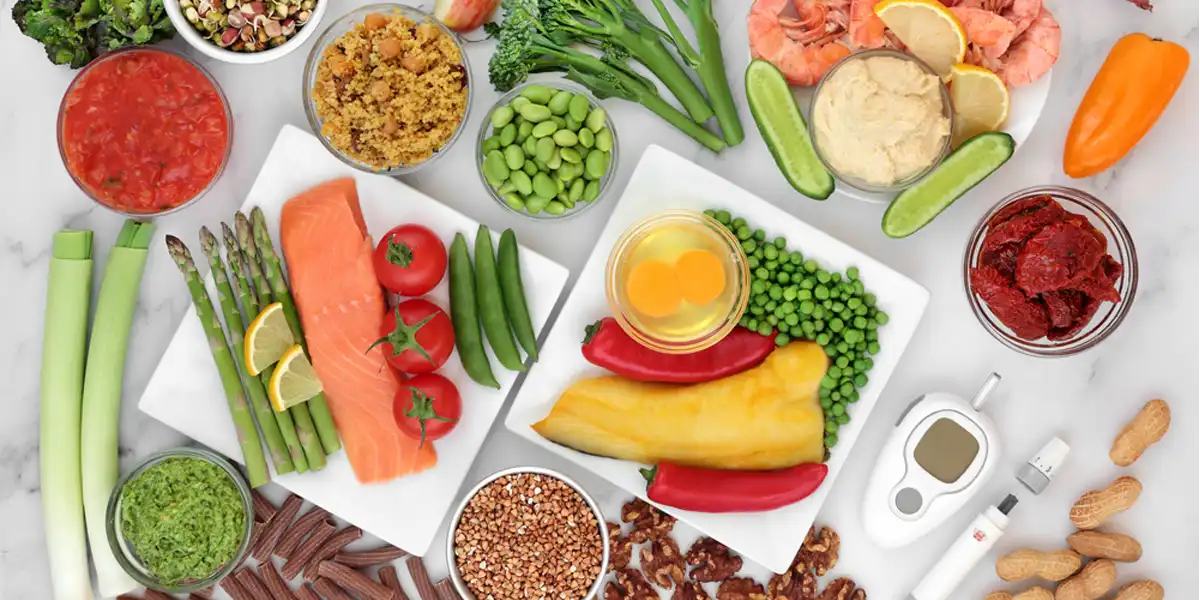
“Aj maine breakfast mei 3 aloo ke parathe khaye.”
Some people might think this is a big achievement, like winning a contest! But if you have diabetes, this isn’t good for you. You are just eating a lot of UNHEALTHY CARBS.
But why is it unhealthy for anyone, especially for people with diabetes? Carbs in food like roti, rice, mango, grapes, potato, etc., are essential as they provide energy to our body, but the BIG QUESTION is: How do carbohydrates (carbs) affect our blood sugar?
Before we move on to answer this question, we feel it is important to bust two very popular myths associated with carbs.
Myth Buster!
Myth: Only foods like rice, roti, potato etc have carbs!Fact: ALL Vegetarian foods have carbohydrates in them. |
We all know that foods like sweets (mithai), dairy products such as milk, dahi, and paneer, vegetables like potatoes, sweet potato, tomato, etc., whole grains like rice, and bananas mostly contain carbohydrates.
However, in reality, almost all plant-based foods, or foods in the vegetarian category, contain carbohydrates; it’s just the type and quantity that varies.
On the other hand, animal-based foods like meat, chicken, and eggs naturally contain no carbohydrates unless carbs are added during cooking in the form of gravies, masalas, seasoning, etc.
This highlights the importance of understanding the wide range of foods that contribute to our carbohydrate intake.
Myth: Energy drinks & Health drinks are good for health!Fact: All energy drinks & processed foods, are loaded with sugar & carbohydrates. |
Don’t be misled by catchy slogans like “doodh mein ye milao, doodh ka nutrition badhao.” Many products marketed as kids’ energy drinks or as having low or no sugar content, including processed and packaged foods such as chips, biscuits, namkeens, cupcakes, instant noodles, and ready-to-eat items like cup noodles, instant, upma, instant poha, etc., are actually loaded with carbohydrates and sugars. Always read the labels carefully before purchasing and consuming these products to know exactly what’s in them.
[diabetes_nutrition_consults_cta]
Now, let’s get back to our question and learn more about carbohydrates.
Carbohydrates and Diabetes: How It Affects Our Blood Sugar Levels?
Carbohydrates play a significant role in controlling blood sugar levels.
The relationship between carbohydrates and diabetes is crucial, as carb intake directly affects blood sugar levels. When you eat carbs, your body converts them into glucose, which raises your blood sugar.
This increase in your blood sugar depends on the amount and the type of carbs you eat. Different types of carbs affect blood sugar differently, so it’s important to choose your carbs wisely, especially if you have metabolic health conditions like diabetes, obesity, or hypertension.
1. Type of carbohydrates
Foods with simpler or processed carbohydrates (like sugar, maida, sabudana, bakery products, mithai, namkeen, etc.) tend to spike blood sugar levels quickly, while those with complex carbs (like food items made with wheat, jowar, bajra, and raw and cooked vegetables), have a slower, more controlled effect on blood sugar.
2. Sources of carbohydrates
Like mentioned earlier, Carbohydrates are present in nearly all vegetarian foods, including grains (rice and wheat), dals, dairy products, fruits, and vegetables. Understanding the carbohydrate content in these food groups is essential for blood sugar management
3. Impact of cooking methods
Some cooking methods that involve ingredients such as honey, sugar, dates, raisins, corn flour, etc., contain carbohydrates and can raise your blood sugar when you consume.
Understanding the type and amount of carbs you eat can help manage your blood sugar. Learning about the glycemic index (GI) and glycemic load (GL) can also help you choose better foods for keeping your blood sugar under control.
How Do You Know Which Carb to Include in Your Diet?
Choosing the right carbohydrates in diabetes for your diabetes diet plan can help manage your blood sugar and overall health. Here’s how you can make informed choices:
1. Pay Attention to the Glycemic Index
The Glycemic Index (GI) ranks how quickly carbohydrates in foods raise blood sugar levels. High GI foods (70 and above), such as white rice, maida parathas, bhature, mithais etc cause a rapid spike in your blood sugar.
On the other hand, low-GI foods (55 and below) like chickpeas, whole wheat roti, and most dal varieties increase blood sugar more slowly and steadily. Opting for these lower-GI foods can help maintain stable blood sugar levels, which is especially important for managing health and preventing conditions like diabetes.
Also Read
Understanding the Glycemic Index: A Beginner’s Guide
2. Understand Glycemic Load for Real Impact
While the Glycemic Index provides insight into how quickly foods can affect blood sugar, Glycemic Load (GL) considers the amount of carbohydrates in a serving of food, offering a fuller picture.
For example, watermelon has a high GI but a low GL because it contains few carbs per serving. This means that eating a normal serving of watermelon won’t significantly impact your blood sugar levels.
This nuanced understanding allows for more flexibility and precision in dietary choices, especially for managing blood sugar levels.
3. Make Balanced Choices Based on GI and GL Information
Integrating the knowledge of both GI and GL helps you make better decisions about what and how much to eat. Foods with low GI and low GL are generally the best choices for maintaining stable blood sugar levels.
This approach is crucial not only for people with diabetes but also for those aiming to maintain a healthy lifestyle. By selecting foods wisely based on their GI and GL, you can enjoy a varied diet while managing your health effectively.
We know, managing all these dietary details can seem daunting, right? If you’re concerned about understanding these aspects or simply don’t have the time to look into the specifics of managing blood sugar, you are just at the right place!
At Fitterfly, through our Diabetes Prime program and Weight Loss Program, our expert Nutrition Coaches are ready to take on this task for you. They will analyze all the necessary parameters, including your PGR score, to recommend the optimal foods for your diet.
This tailored approach ensures your blood sugar levels are effectively managed, allowing you to focus on achieving your health goals with confidence.”
How Adding Fiber to Your Food Can Help You?
- Fiber plays a significant role in carbohydrate digestion. It slows down the absorption of sugar, which helps prevent quick spikes in blood sugar levels after meals.
- Foods high in fiber, such as whole grains, dal, fruits, and vegetables, are excellent for managing carbohydrate intake and diabetes because they help prevent spikes in blood sugar. When managing carbohydrates and diabetes, it’s important to focus on whole grains and fiber-rich options.
- For example a meal with moong dal, brown rice, palak ki bhaji and a bowl of salad, provides a balanced mix of fiber that helps moderate blood sugar levels.
Another option that’s been getting a lot of attention lately is wildcrafted Irish sea moss supplement – a natural supplement rich in soluble fiber and essential minerals that may support blood sugar balance and digestion. If you’re curious, it could be worth exploring, but only after checking with your doctor or nutritionist to see if it’s right for you.
How You Can Modify Your Diet
Managing your carbohydrate intake doesn’t mean you have to give up your favorite foods. It’s about making smarter choices and simple to your existing diet.
Also, balancing carbohydrates and diabetes involves choosing the right types and portions of carbs to maintain a stable blood sugar levels.
Here are some tips to help you lower your carbohydrate intake without sacrificing flavor:
1. Modify Your Rotis
Try making your rotis with a mixture of flour. Adding besan (chickpea flour) or moong dal flour to your roti can lower its GI and increase its nutritional content.
2. Innovate with Theplas
Adding vegetables like lauki, methi, palak, and spring onions into theplas, increases the fiber content, which can help you to control blood sugar levels.
3. Smart Cooking Techniques
- When preparing parathas and chapatis, use healthier oils (unrefined and filtered versions of olive oil, groundnut oil, mustard seed oil (sarso ka tel), sesame oil (til ka tel), or rice bran oil) instead of ghee or butter. This ensures, you are eating healthy fat.
- Increase the proportion of dal when preparing dishes like khichdi. Dals have low GI and are high in fiber, making them excellent for blood sugar management.
- Cook rice and roti in a way that reduces their GI. For instance, cooling cooked rice before reheating (approximately after 5-6 hours) and serving can moderately decrease its GI.
4. Cheat Smartly
There are time like during the festive season, or some special occasion or simple because of diet boredom, you might find yourself craving treats like pasta, or a mithai or a pastry. While these aren’t typically advisable for someone with diabetes, if you really want to indulge, there are smarter ways to do it.
For example – instead of the regular pasta made in white sauce (maida and cheese), opt for dal based pasta (nowadays available easily) in tomato gravy, or choose cakes or pastry made with almond flour instead of refined flour (maida).
These alternatives allow you to satisfy your cravings with less impact on your blood sugar, helping you stay on track with your diet. But remember, this is only for your cheat days 😃.
How We At Fitterfly Can Help You?
Managing carbohydrate intake and diabetes doesn’t mean giving up on your favourite food; instead, it means eating smarter!
For example, choose low-glycemic, high-fiber foods like vegetables, whole grains, and dals instead of high-glycemic foods like white rice and dishes made from maida.
We know it’s not always easy to figure out the best foods for you. That’s where our expert coaches at Fitterfly can assist. Using science and technology, our Nutrition Coaches tailor your diet to fit your tastes, preferences, and lifestyle.
We use the latest technology, like CGM and PGR, to determine which foods are best for you, whether roti or rice suits you better and we back this up with data.
If you or someone you love is working on managing their diabetes and needs support with their overall plan, including diet, exercise, and mental well-being, we’re here to help. Call one of our Program Advisors at 08068507599
This blog provides general information for educational and informational purposes only and shouldn't be seen as professional advice.
Frequently Asked Questions
How do carbohydrates affect diabetes?
When you consume carbohydrates, your body converts them into glucose, increasing your blood sugar levels. The impact on your blood sugar varies based on the quantity and type of carbohydrates you ingest. Since different carbohydrates in diabetes influence blood sugar in different ways, it's crucial to make thoughtful choices about the carbohydrates you include in your diet.
What carbohydrates should people with diabetes avoid?
People with diabetes should generally avoid high-glycemic carbohydrates that cause rapid spikes in blood sugar. These include refined sugars and refined grains and their products, such as white bread, white rice, pastries, and sugary drinks and snacks like mathri, poori etc.
How many carbs should a person with diabetes have in a day?
The amount of carbs a person with diabetes should consume daily varies depending on individual health goals, activity levels, and dietary needs. It's recommended to consult with your doctor or a dietitian to determine the appropriate daily carbohydrate intake for yourself.
Do carbohydrates raise blood sugar?
Yes, carbohydrates do raise blood sugar levels. They are the main source of glucose in our diet, which directly impacts blood sugar levels. Managing the type and quantity of carbohydrates consumed is essential for controlling blood sugar.
What is the list of bad carbs for people with diabetes?
Sugary foods and beverages (e.g., sodas, sherbets, sweet desserts, candies) Refined grains (e.g., white bread, white pasta, noodles, namkeen) High-glycemic fruits (e.g., mango, chickoo, custard apple, banana) Processed snacks and baked goods (e.g., cookies, cakes, chips) Starchy vegetables in large quantities (e.g., potatoes, corn)













